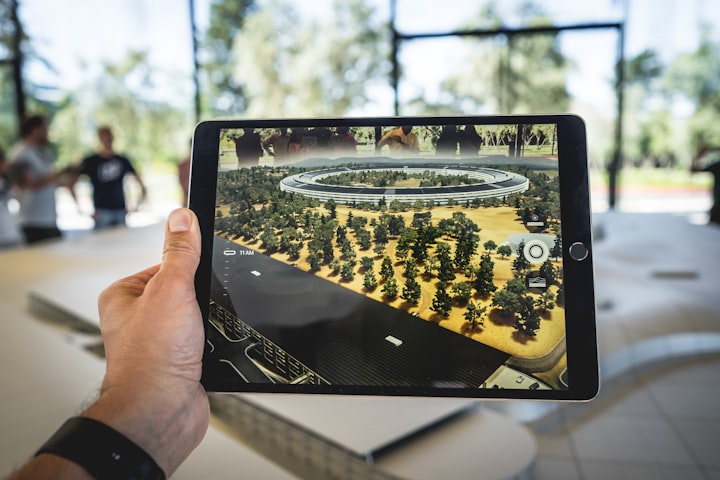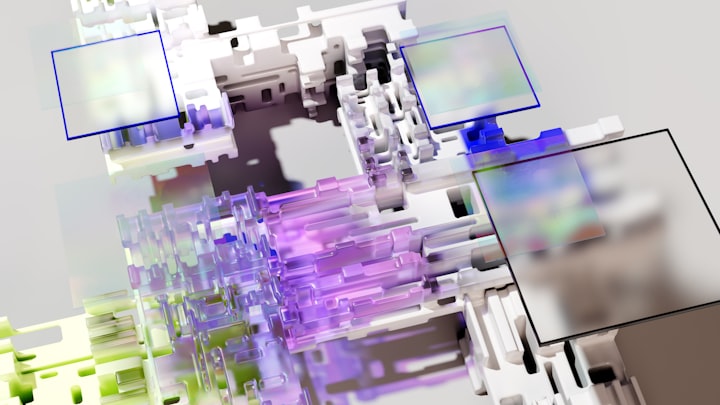Augmented Reality: Transforming the Way We Live and Work
Augmented Reality (AR) is a technology that merges digital information with the physical world, creating an enhanced reality experience. It is rapidly transforming the way we live and work, offering innovative solutions in various industries such as education, retail, healthcare, and entertainment.

Augmented Reality (AR) is a technology that merges digital information with the physical world, creating an enhanced reality experience. It is rapidly transforming the way we live and work, offering innovative solutions in various industries such as education, retail, healthcare, and entertainment. AR technology overlays digital images, sounds, and animations on the real world, allowing users to interact with the environment in new and exciting ways. The advancements in AR technology have made it possible for people to access information and content in real-time, offering a more immersive and interactive experience. From AR-powered classrooms to interactive shopping experiences, the possibilities of AR are virtually limitless and its impact on our daily lives is expected to grow in the coming years. Whether it's improving the quality of life for people with disabilities or revolutionizing the way we learn and do business, Augmented Reality is poised to play a significant role in shaping the future.
Augmented Reality (AR) is a technology that blends the physical world with digital information to create an immersive experience. It has the potential to revolutionize the way we live and work by creating a new level of interaction between people and information. In this blog, we will delve into the history of AR and its current and future applications in various industries.
The history of AR can be traced back to the 1960s, but it wasn't until the recent advancements in technology that it became a reality. With the advent of smartphones, AR has become accessible to the masses, and its usage has increased dramatically in recent years. The primary driver behind the growth of AR has been the gaming industry, with popular games like Pokemon Go and Harry Potter: Wizards Unite that use AR to create an immersive gaming experience.
One of the most promising applications of AR is in the field of education. By using AR, students can have an interactive learning experience that brings subjects to life. For example, in a biology class, students can use AR to study the anatomy of a human body in a virtual environment. By superimposing virtual images on real-world objects, students can gain a deeper understanding of complex concepts. Additionally, AR can also be used for remote learning, where students can attend virtual classes from the comfort of their homes.
The retail industry is also poised to benefit from AR technology. With AR, retailers can create interactive shopping experiences that allow customers to try on clothes and see how they look before making a purchase. Moreover, retailers can use AR to create virtual product demonstrations, which can help customers understand the features and benefits of a product. This can lead to increased customer engagement and satisfaction, as well as reduce the number of returns due to dissatisfaction with the product.
Another application of AR is in the field of medicine. AR can be used in various medical procedures, such as surgery, to provide doctors with real-time information and guidance. For example, in a minimally invasive surgery, AR can be used to project virtual images on a patient's body, which can help the doctor perform the procedure more accurately. Additionally, AR can also be used to provide patients with a virtual reality experience that can help them prepare for and recover from surgery.
Finally, AR has the potential to transform the way we work by creating a more interactive and immersive work environment. For example, in architecture, AR can be used to create virtual building models that architects can use to visualize and plan buildings. In construction, AR can be used to provide workers with real-time information about the construction site, which can help them make informed decisions and improve their efficiency.
In conclusion, AR is poised to transform the way we live and work in the future. By blending the physical and digital worlds, AR creates a new level of interaction between people and information that can lead to increased engagement, understanding, and efficiency. As technology continues to advance, we can expect to see even more exciting applications of AR in various industries.
About the Creator
Dipesh Saini
I, Dipesh saini student at Rajasthan University in Bachelor of computer application. Currently, I am working with a Network Marketing start-up. I am interested in writing. I am interested to work on the new task.





Comments
There are no comments for this story
Be the first to respond and start the conversation.